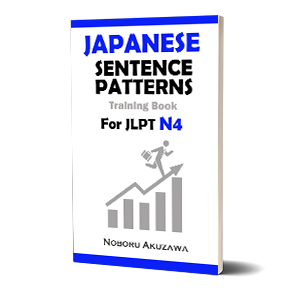わたしのAはBです。 My A is B.
Watasi no A wa B desu.
日本語 / にほんご / Japanese
(1)私の名前はのぼるです。
(2)私の友だちは学生です。
(3)私の猫は白いです。
(4)私の犬は小さいです。
(5)私の好きな色は青です。
(6)私の好きなスポーツはテニスです。
ことばと表現 / Words & Expressions
名前【なまえ namae】name
友だち【ともだち tomodati】friend
猫【ねこ neko】cat
白い【しろい siroi】white
犬【いぬ inu】dog
小さい【ちいさい tiisai】small
好き【すき suki】like
色【いろ iro】color
青【あお ao】blue
スポーツ【すぽーつ supootsu】sport
テニス【てにす tenisu】tennis
English
(1)My name is Noboru.
(2)My friend is a student.
(3)My cat is white.
(4)My dog is small.
(5)My favorite color is blue.
(6)My favorite sport is tennis.
ローマ字 / Roman letters
(1) Watasi no namae wa Noboru desu.
(2) Watasi no tomodati wa gakusei desu.
(3) Watasi no neko wa siroi desu.
(4) Watasi no inu wa tiisai desu.
(5) Watasi no suki na iro wa ao desu.
(6) Watasi no suki na supootsu wa tenisu desu.
ひらがな / hiragana
(1)わたしのなまえはのぼるです。
(2)わたしのともだちはがくせいです。
(3)わたしのねこはしろいです。
(4)わたしのいぬはちいさいです。
(5)わたしのすきないろはあおです。
(6)わたしのすきなすぽーつはてにすです。
no (の) particle
When you want to say “my name” or “his friend” how will you say it in Japanese? In order to complete this exercise you’ll need to know the Japanese possessive called no (の). Take a look at this sentence: watashi no namae (わたし の なまえ). Notice that the no (の) goes between the word watashi (わたし) and namae (なまえ). Watashi (わたし) means “I” while namae (なまえ) means “name”. Since the no (の) possessive is after the watashi (わたし), you know that the person who is doing the possession is “I”. So in English this would change to the word “my”. Altogether the sentence watashi no namae (わたし の なまえ) means “my name”.
wa (は) particle
The particle は – wa indicates the main topic of a sentence. In English it would be similar to starting a sentence with “as for…”. Most of the times the main topic of the sentence is identical to what is called the subject in English.

























先生
私の仕事はエンジニアで、油井の機械技師です。
このセンテンスは、いかがですか?
Hi Jim-san,
That’s no problem at all. It’s natural.
大丈夫です。自然な日本語表現ですよ。